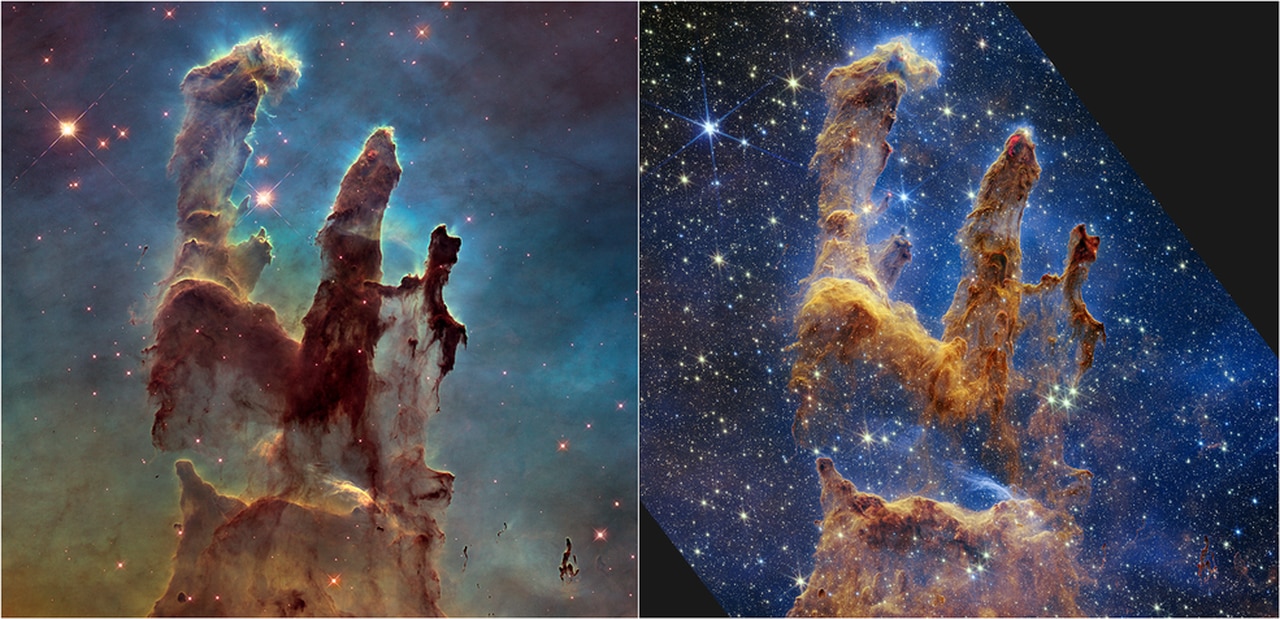‘Pillars of Creation’: James Webb telescope shows ‘detailed landscape’ of space first seen by Hubble
NASA’s new James Webb Space Telescope has taken new images of one of the most iconic deep space landscapes – the Pillars of Creation. They look like rock formations but are semi-transparent clouds of gas and dust where stars are formed.
The Webb telescope’s mirrors were made in Alabama and assembled and tested for cold resistance at NASA’s Marshall Space Flight Center in Huntsville.
First photographed by NASA’s Hubble Space Telescope in 1995, the pillars are seen much more clearly in the new Webb image. The new images also allow a better count of newly formed stars and the amounts of gas and dust. Here are some things to look and thinks about for in the new image:
1. The “scene stealers,” as NASA calls them, are the bright red orbs, often with “spikes” that lie outside one of the pillars. These orbs eventually collapse under their own gravity becoming new stars.
2. The “wavy lines that look like lava at the edges of some pillars” are ejections from the still-forming stars. Young stars can shoot jets of dust and gas that can collide with the pillars creating bow-shaped waves similar to those a boat makes while moving through the water. The red glow comes from “energetic” hydrogen.
3. These are young stars being formed and estimated to be “only a few hundred thousand years old.”
4. We are not seeing “through” the clouds at vast distances of space or new galaxies. The mixture of gas and dust scientists call the “interstellar medium keeps us from seeing the deep universe.
